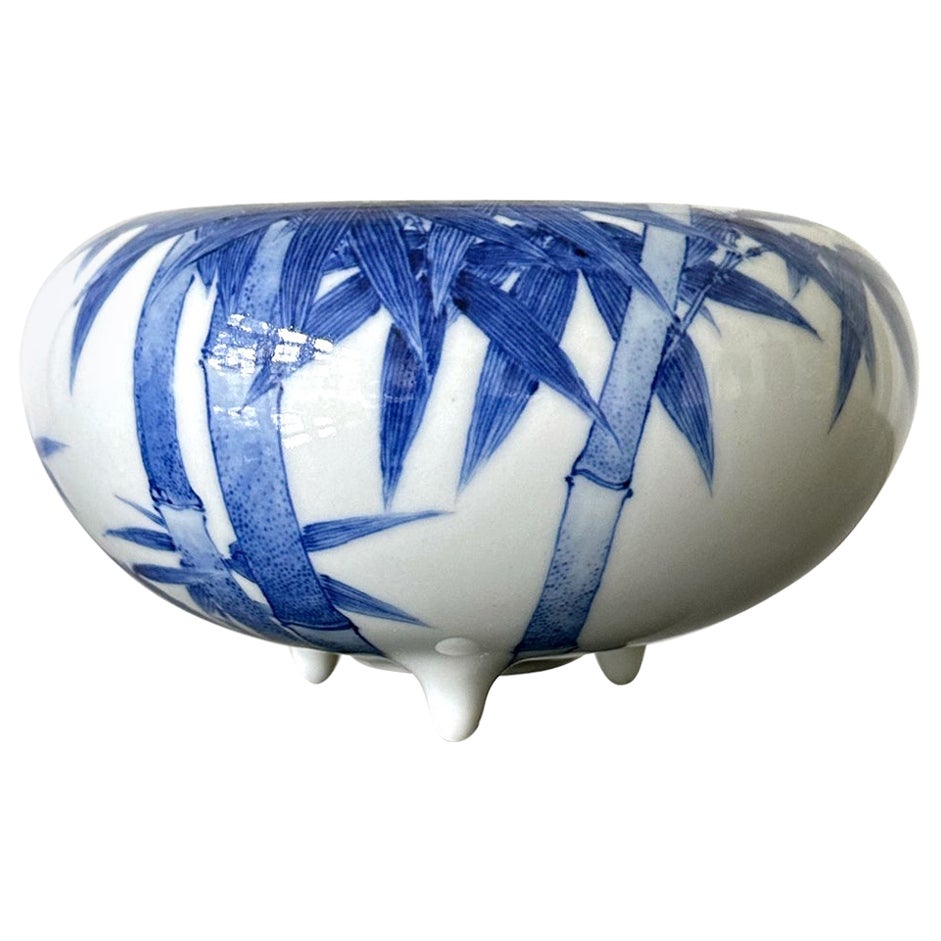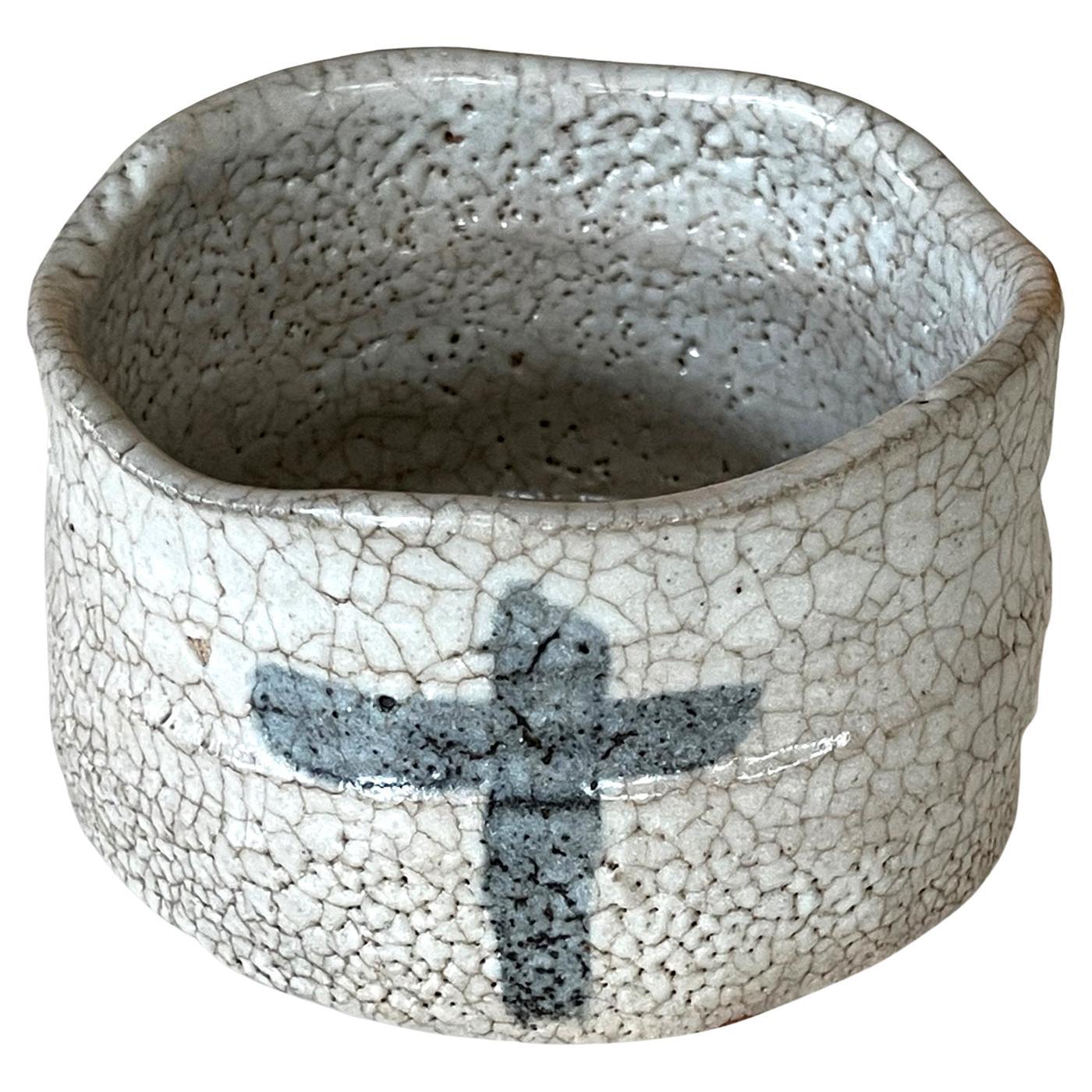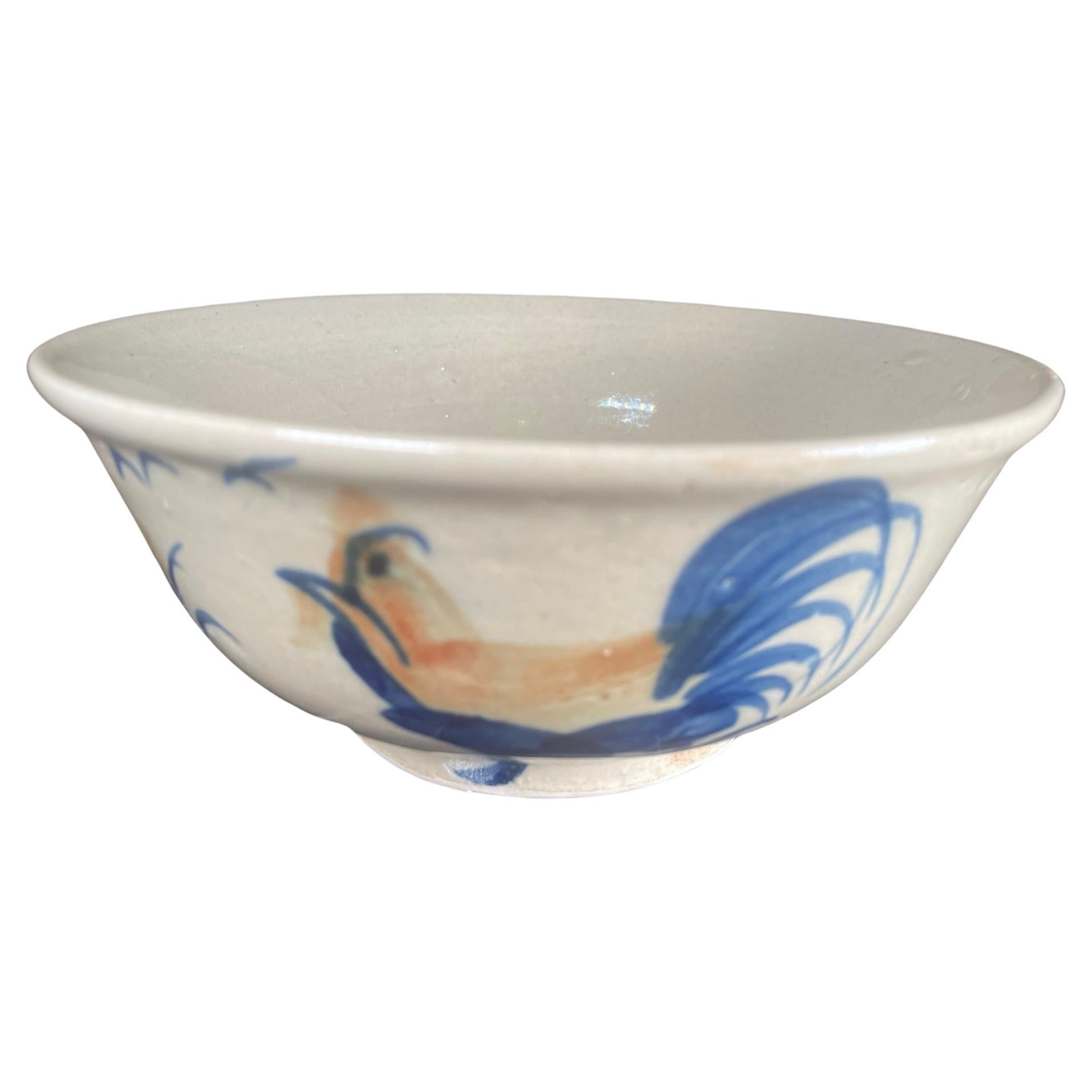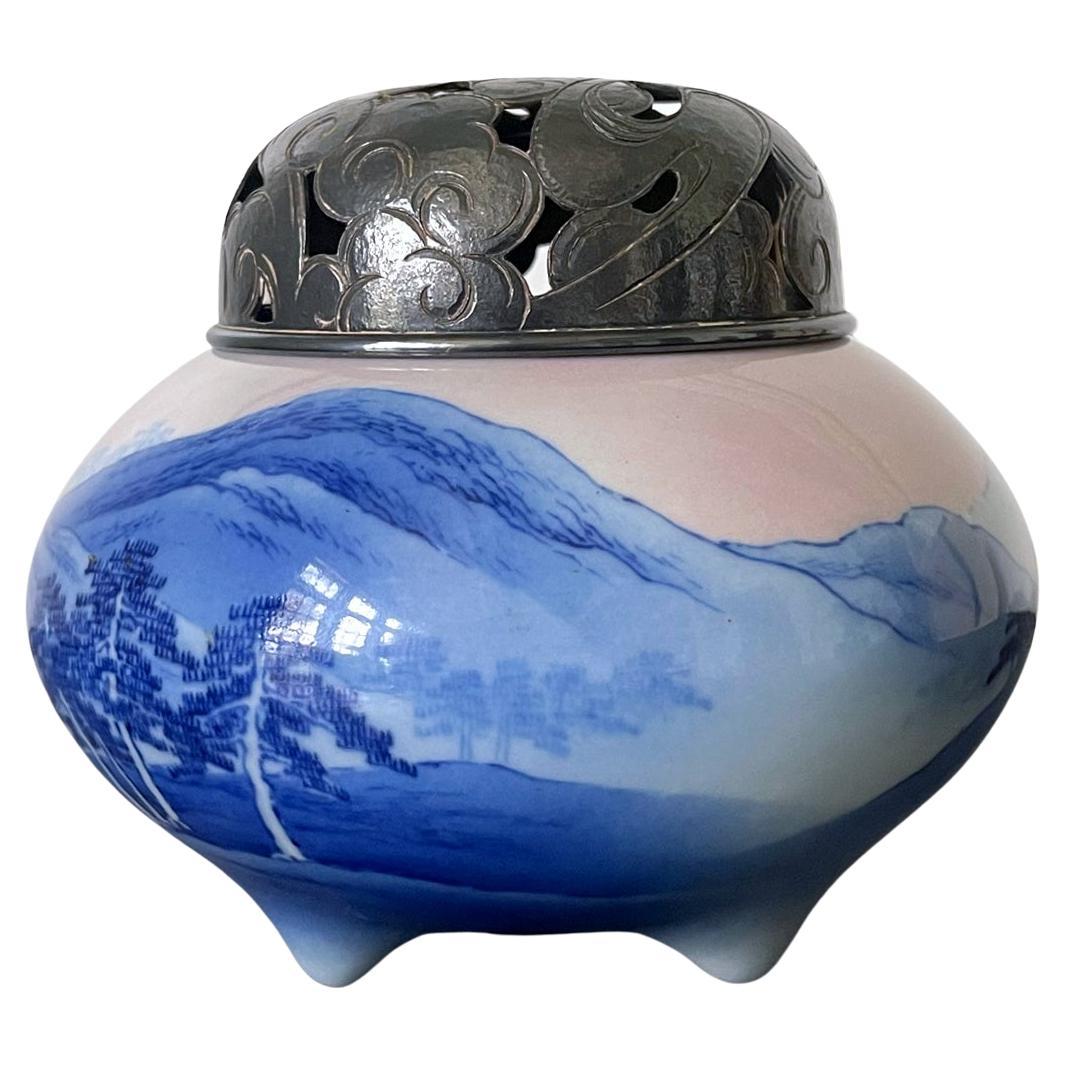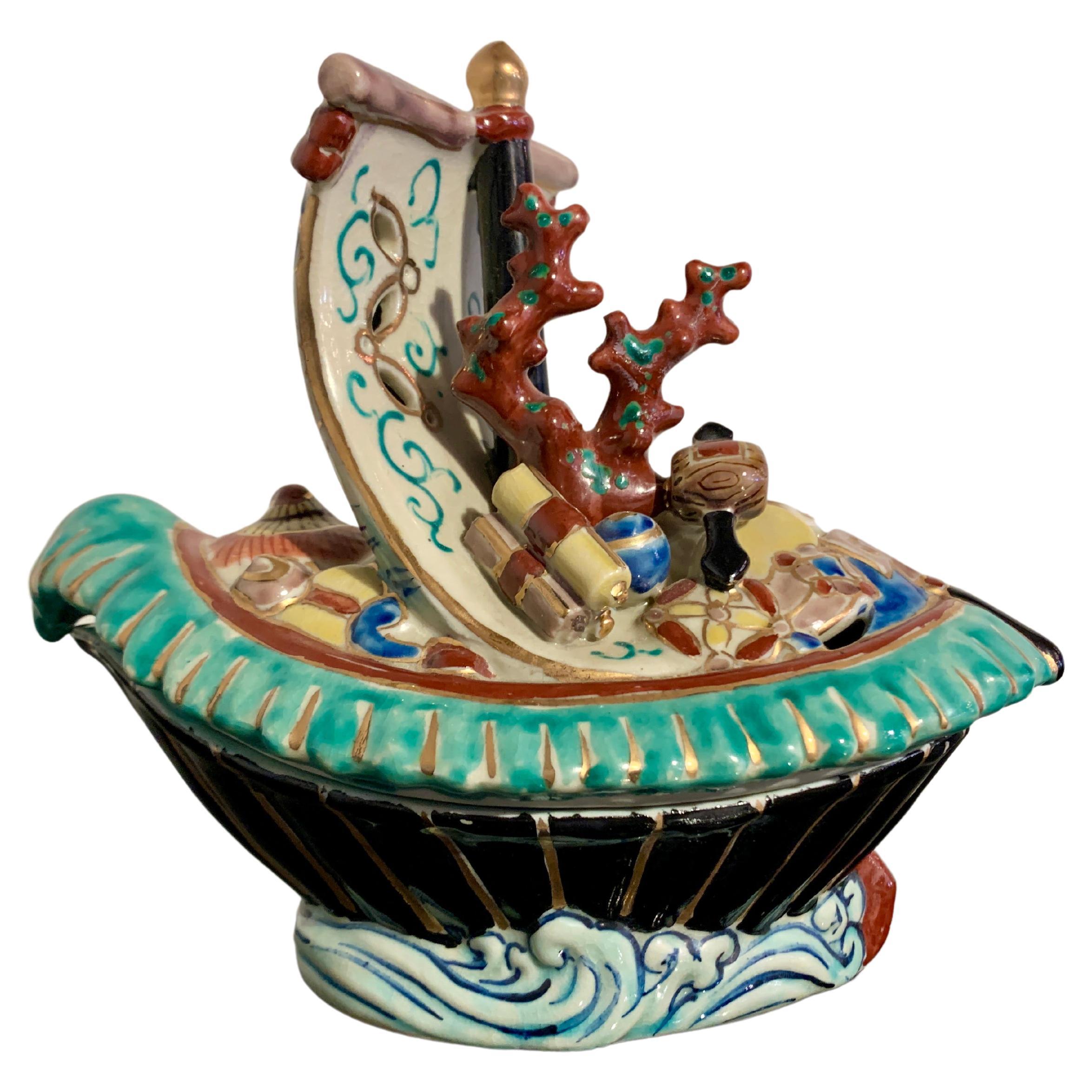Items Similar to Japanese Tea Bowl Flying Bats & Good Fortune Hand-Built Hand Glazed
Want more images or videos?
Request additional images or videos from the seller
1 of 11
Japanese Tea Bowl Flying Bats & Good Fortune Hand-Built Hand Glazed
About the Item
Mint condition
From Japan, a hard to find and unusual hand-built, painted and glazed tea bowl featuring "flying bats" - signs of good fortune, created over thirty years ago.
A stunning simple motif tea bowl with good original colors.
Perfect Japanese tea bowl lover gift. Mint condition.
Dimensions: 1.75 inches high and 5.5 inches diameter
Hand-built, hand-painted, and hand glazed.
Only one.
Lifetime guarantee of authenticity. All our Asian works of art are accompanied by our lifetime guarantee of authenticity.
- Dimensions:Height: 1.75 in (4.45 cm)Diameter: 5.5 in (13.97 cm)
- Style:Showa (Of the Period)
- Materials and Techniques:
- Place of Origin:
- Period:
- Date of Manufacture:Late 20th Century
- Condition:Wear consistent with age and use.
- Seller Location:South Burlington, VT
- Reference Number:1stDibs: LU1289234965232
About the Seller
5.0
Platinum Seller
These expertly vetted sellers are 1stDibs' most experienced sellers and are rated highest by our customers.
Established in 1990
1stDibs seller since 2015
2,209 sales on 1stDibs
Typical response time: 1 hour
- ShippingRetrieving quote...Ships From: South Burlington, VT
- Return PolicyA return for this item may be initiated within 7 days of delivery.
More From This SellerView All
- Japanese Fine Large Rooster And Birds Tea Bowl, Hand-Built and Hand GlazedLocated in South Burlington, VTMint Kyo ware bowl From Japan, a beautiful hand-built, painted and glazed, Kyo ware large bowl or large tea bowl with a proud rooster and birds motif created in the 1930s.- over se...Category
Vintage 1930s Japanese Showa Ceramics
MaterialsCeramic, Pottery
- Japanese Fine Blue Impressions Tea Bowl Hand-Built and Hand GlazedLocated in South Burlington, VTMint Shozan tea bowl, Akatsu ware, Blue Impressions. From Japan, a beautiful hand-built, painted and glazed, Akatsu ware tea bowl in an impressive Picasso like impressionistic mot...Category
Vintage 1930s Japanese Showa Tea Sets
MaterialsCeramic, Pottery
- Japan Antique Daruma Hand-Carved Talisman of Perseverance and Good LuckLocated in South Burlington, VTJapan, a dramatic large-scale antique Daruma hand-carved in the round with finely detailed hair, nose and brows - a wooden Talisman of perseverance and good luck from the early 20th century. These were hand turned and hand carved to serve as solid wood molds for making paper mache versions. While they occasionally appear in Japanese antique markets...Category
Antique 19th Century Japanese Meiji Sculptures and Carvings
MaterialsWood
- Japanese Old Tea Ceremony Pot Chagama "Trellice and Flowers" Immediately UsableLocated in South Burlington, VTFrom our recent Japanese acquisitions with original signed box. A finely cast Japanese traditional iron teapot -chagama- with a wonderful relief band and design of summer time bam...Category
Mid-20th Century Japanese Showa Scholar's Objects
MaterialsIron, Bronze
- Japan Gold Gilt Good Luck Elephant CenserLocated in South Burlington, VTRare find: Ancient Japanese design gilt censer of a good luck elephant- signed Japan This model elephant sculptural LED candle holder and censer was crafted in a handsome gilt finish iron of an effigy of an ancient elephant...Category
Mid-20th Century Japanese Sculptures and Carvings
MaterialsIron
- Japanese Pair Antique Hand Carved Prosperity and Business Lucky GodsLocated in South Burlington, VTJapan, a wonderful pair (2) finely hand carved hardwood sculptures of Ebisu and Daikoko, two of Japan's seven lucky gods signifying prosperity, good busines...Category
Early 20th Century Japanese Showa Sculptures and Carvings
MaterialsWood
You May Also Like
- Antique Japanese Shino Ware Chawan Tea BowlLocated in Atlanta, GAOn offer is a Japanese ceramic tea bowl (chawan) used in the traditional chado ceremony. The bowl was potted in clog form with a ring foot shaved extremely low. Its size and harmonious proportion make it perfect to be held in both hands during chado. Classified as shino ware...Category
Antique 18th Century Japanese Edo Ceramics
MaterialsCeramic
- Japanese Glazed Ceramic Bowl by Makuzu KozanBy Makuzu KozanLocated in Atlanta, GATri-pod ceramic bowl likely used as an incense burner (koro) by Japanese Imperial potter Makuzu Kozan (1842-1916) circa late Meiji period. The signature indicates that it was produce...Category
Antique 1880s Japanese Meiji Ceramics
MaterialsCeramic
- Japanese Shino Ware Chawan Tea Bowl by Toyoda KatsuhikoLocated in Atlanta, GAA modern Japanese ceramic tea bowl (chawan) made by potter Toyoda Katsuhiko (1945-). The bowl was potted in clog form with a short ring foot in the tradition of Shino ware...Category
20th Century Japanese Edo Ceramics
MaterialsCeramic
- Japanese Glazed Ceramic and Silver Koro Incense Burner Makuzu KozanBy Makuzu KozanLocated in Atlanta, GAA tri-pod ceramic incense burner (koro) by Japanese Imperial potter Makuzu Kozan (1842-1916) circa late Meiji to the start of Taisho period (1890-1910s). A fine example of the artist's work belonging to the late part of his underglaze paint phase (started around 1887 until his death), the surface of the koro was painted in beautiful shades of blue to depict a continuous landscape not unlike a traditional ink and watercolor hand scroll. The rise and fall mountains recede and fade into the horizon and are dotted with groves of pines. The sky is painted with a beautiful subtle shade of pink, suggesting a time of sunrise or sunset. The koro is fitted with an ensuite reticulated sterling silver hoya (incense cover), pierced with swirling cloud and marked with "pure silver' in Kanji. The base is signed in underglaze blue "Makuzu Kozan Sei" within a double ring. The piece is beautifully potted in form and the decoration was done with expertise using the novel technique developed by Kozan called Fuki-e (the blow painting), in order to achieve the striking landscape known as "Mountain and Water" with sense of dimensions and gradient, the poetic effects normally conveyed only by sumi ink staining on paper. The piece comes with an unsigned tomobako (wood storage box) of a recent age. Also known as Miyagawa Kozan (1842–1916), Makuzu Kozan was one of the most established and collected ceramist from Meiji Period. Born as Miyagawa Toranosuke, Kozan established his pottery studio in Yokohama around 1870s and later became one of the appointed artists to the Japanese Imperial household. His work was exhibited in many international fairs that the Meiji government participated at the turn of the century and won many grand prizes. Being one of the most creative ceramists, Kozan started experimenting with new chemical colors from the West in the format of his porcelain glaze around 1880s. New colors allowed him to create underglaze designs that appeared bright, smooth and glossy. He even invented his own receipt of cobalt blue to achieve a much brighter yet softer shade, as evident on this vase. To create landscape that is realistic and dimensional, more common in the western paintings, he was inspired by the native Japanese ink painting technique developed around 1900 by Yokoyama...Category
Antique Early 1900s Japanese Japonisme Ceramics
MaterialsSilver
- Japanese Kutani Treasure Boat 'Takarabune' Censer, Taisho Period, JapanLocated in Austin, TXA wonderful Japanese Kutani porcelain incense burner, koro, in the form of a treasure ship, Takarabune, Taisho Period (1912 - 1926), Japan. The censer boldly modeled as the legendary Takarabune, or Treasure Ship, a mythical ship said to carry the shichifukujin, the Seven Lucky Gods, around the heavens during the first days of the New Year, visiting lucky humans to bring blessings and prosperity. The black bodied, single mast ship sails on the water, its sail full of wind and decorated with the character "takara", meaning treasure. The pierced top of the ship serving as the cover for the censer. It is loaded with magical items and treasure, most prominently, a large coral branch...Category
Vintage 1910s Ceramics
MaterialsPorcelain
- Japanese Satsuma Ceramic Ewer Yabu MeizanBy Yabu MeizanLocated in Atlanta, GAA Satsuma ware miniature ewer from the studio of Yabu Meizan (birth name Yabu Masashichi; 1853-1934), who was one of the most celebrated and collectible Satsuma artists from the Meij...Category
Early 20th Century Japanese Japonisme Ceramics
MaterialsCeramic
Recently Viewed
View AllMore Ways To Browse
Hand Painted Japanese Pottery
Antique Thai Jar
Chinese Porcelain Headrests
Peacock And Peony Asian Art
Japanese Platinum Gold Red Porcelain Box
Kintsugi Bottle
Kangxi Porcelain Charger
Chinese Zisha Teapot
Korean Celadon Jar
Zisha Teapot
Japanese Lion Incense Burner
Jiajing Porcelains
Kyo Satsuma
Meiji Bowl With Cover
Satsuma Teapot Meiji
Yixing Zisha Teapot
Antique Imari Fluted Bowl
Pair Of Antique Imari Chargers

